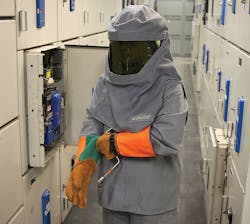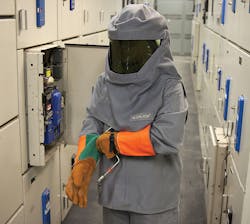Workplace safety should be a common topic for every employer. Periodic training, safety seminars, daily safety discussions, and safety briefings prior to working a job are just a few of the ways this topic touches all workers.
Most employees are aware of general safety requirements for walking and working around the facility. Everyone is taught to wear appropriate safety glasses, hard hats, footwear, fall protection, hearing protection, etc. But what about electrical safety? To whom does this topic apply? What are the training requirements for the personnel that could be affected by electrical accidents such as an arc flash?
Documents and standards
The Occupational Safety and Health Administration (OSHA) is the organization that helps employers and employees understand the requirements for a safe workplace. OSHA documents, such as 29 CFR 1910 (Safety and Health Regulations for General Industry) and 29 CFR 1926 (Safety and Health Regulations for Construction), address the safety requirements for many topics including electrical safety.
OSHA 29 CFR 1910 addresses the needs for electrical safety training, especially those under “higher than normal risk of electrical accident.” Table S-4 in this document lists the following job types as being at higher-than-normal risk of electrical accidents and requires them to have safety training:
• Blue collar supervisors
• Electrical and electronic engineers
• Electrical and electronic equipment assemblers
• Electrical and electronic technicians
• Electricians
• Industrial machine operators
• Material handling equipment operators
• Mechanics and repairers
• Painters
• Riggers and roustabouts
• Stationary engineers
• Welders
As you can clearly see, this list includes a number of non-electrical type job categories as well.
OSHA 29 CFR 1910 also references the National Fire Protection Association standard NFPA 70E, “Electrical Safety in the Workplace,” as a reference to help comply with electrical safety. This standard is currently used to help employers create and maintain a safe work environment. NFPA 70E defines the electrical hazards that exist, how to mitigate employees risk, and how to comply and maintain employee safety with regard to electrical hazards. In the 2015 Edition of NFPA 70E — a very strong tie exists between safety and properly maintained equipment.
One of the key electrical maintenance standards is NFPA 70B, “Recommended Practice for Electrical Maintenance.” This standard defines what maintenance tasks should be performed on the various electrical components found in any typical installation. So, if a company is not performing electrical maintenance along with properly installed equipment, the electrical safety program is not complete.
Note: NFPA 70E and NFPA 70B standards documents can be accessed for free at www.nfpa.org.
Risk of non-compliance and potential fines
If you experience a workplace injury or fatality, expect a visit from OSHA. You can be certain that they will verify whether you are compliant with the requirements outlined in NFPA 70E. If not, you’re going to face some hefty fines.
For example, OSHA cited a New York electric company in 2009 for 14 alleged serious violations of safety standards after a company employee was burned in an electrical arc flash. The incident happened when employees were performing maintenance on 34.5kV electrical switches and transformers. OSHA’s inspection determined one of the switches had not been de-energized before employees began their work, and the switches hadn’t been properly barricaded and tagged to prevent exposure to live electrical parts. OSHA also found the injured worker and other employees were not adequately informed about/supplied with appropriate personal protective clothing — nor had they been adequately trained in electrical safe work practices and proper hazardous energy control procedures. In this case, OSHA proposed $88,200 in fines. But, as we all know, the costs for improper electric management practices are far greater than just dollars and cents. After all, safety is everyone’s responsibility.
DeMonte is director, technical training & support for Empower Training Services in Canonsburg, Pa. He can be reached at [email protected].

